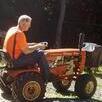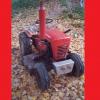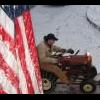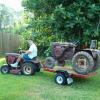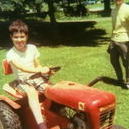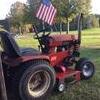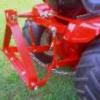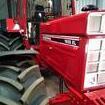Leaderboard
-
in all areas
- All areas
- Markers
- Marker Comments
- Marker Reviews
- Articles
- Article Comments
- Article Reviews
- Classfieds
- Classified Comments
- Classified Reviews
- Wiki's
- Wiki Comments
- Wiki Reviews
- Blog Entries
- Blog Comments
- Images
- Image Comments
- Image Reviews
- Albums
- Album Comments
- Album Reviews
- Files
- File Comments
- File Reviews
- Posts
-
Custom Date
-
All time
November 28 2011 - November 28 2024
-
Year
November 28 2023 - November 28 2024
-
Month
October 28 2024 - November 28 2024
-
Week
November 21 2024 - November 28 2024
-
Today
November 28 2024
-
Custom Date
08/01/2022 - 08/01/2022
-
All time
Popular Content
Showing content with the highest reputation on 08/01/2022 in all areas
-
12 pointsWhen you been going right along and working hard it's important to take rest breaks appropriately... Even if you're a BBT. Here we see an excellent usage of a front weight.
-
11 pointsPicked up a mechanically solid 74 C160 hydro this weekend. It belonged to the owner of the first Wheel Horse dealership that I bought out a few years ago; I've had my eye on it for 2 or 3 years and the owners widow finally realized it was time to let it go. It had a " restoration / quickie paint job " done to it about 20 years ago. It is in great shape mechanically, electrical is un-butchered, everything works as it should, just needs taken apart and redone properly . Has the good cast iron pulleys hanging on the mule drive. Sometime down the road.......
-
10 points
-
8 pointsCan't help yah here Kev... I ripped all my audios out and Dan croons me....
-
6 pointsMick I've towed over 1,000 lbs with my 1974 c160-8, many times.. up steep sections of the acreage. As stated above and it warrants additional attention... You'll find it's not about how much you can PULL but about how much you can STOP. The personnel at this dealership are obviously not the least bit familiar with old school garden tractors and the WORK they will perform.
-
6 points
-
6 pointsOr what ever else I can find to weld to a piece of 1/2" round stock. Welded some nuts together on some to make a brass knuckle looking top. The one for my rat rod is some nuts welded together to resemble a logo.
-
6 pointsIn the area where the new building is going we had two tarp covered portable garages. The base layer of the one we put up 3 years ago with the help of our fine friend @JCM Jim was a tarp on the ground and a layer of 3/4 Stone varying from two to five inches in depth. Seeing as to how that whole area is going to be shredded with an excavator we figured to reuse most of those stones in other areas. Forest pathways would be an obvious great choice. Well, then there's the fact that Trina is building a little area right down the middle of one of those paths for the vows ceremony of her daughter's upcoming wedding. Here's a reminder of what it looked like yesterday morning. Trina and her mom set to, with her 867 Pigpen and mid-70s Ohio Steel trailer. They moved a bunch of the above mentioned Stone creating a walkway in front of the arch and also filled in a low spot off to the right. She also came up with another pretty brilliant idea. Use locally sourced pieces of our future firewood and some of the oak boards that will be made into my truck bed to function as benches. We've yet to move the boards down. We won't do that until probably the day before the wedding so as to keep most of the rain and sun off of those boards to prevent twisting. You can see the bases in place already here...
-
5 pointsGood show as usual. Weather was perfect. Didn't get many pictures as still trying to finger out this new dumb phone. Did get one of @Achto running a green & yellow.... To his credit he was only 6 ft off from placing in pulling on his Cockshutt. I don't think I even got one of our exhibit but a few more of what I got. Rob @oldiron613 on an RJ where he proceeded to lose his hitch pin and promptly dump his wife in the gravel. Get some more of these glamor shots to yah Dan.... Broast @19richie66.... old iron wants a cup...
-
5 points
-
5 pointsUnfortunately I was not real camera happy myself, I did get a few pics though. This year the bridge was decorated to welcome John Deere as the feature tractor. This Waterloo Boy is apparently 1 of 1 left in existence. The owner received an award for his hard work on the restoration. Another award winner. There were a few Steam engines there but this Minneapolis Moline was the only one that I saw doing any work. It spent a fair amount of time hooked up to the saw mill.
-
5 points
-
5 points
-
5 points
-
4 pointsMy no good rotten immature evil mind wants to see somebody come at this woman with a whip like the emoticon... 🥋
-
4 pointsOne of the kids on the robotics team had a Ford Probe that he installed a stereo in. Was big enough that he had to upgrade the alternator to run it. One day he and some other kids on the team jumped in the car during a break period to listen to the stereo. I wandered by the car that was going thump, thump, thump. They saw me, turned the stereo down and rolled a window down a crack. I told him that he was pretty brave putting that system in an old Ford and wasn't he worried that the car would shake into pieces?
-
4 points
-
4 pointsIt’s been many many years, but I believe there should be a remote wire connecting subwoofer and head. That wire should only be powered when ignition is on otherwise amp will drain battery when car is off.
-
4 pointsTie rods: I thought I'd add this here, since it's somewhat related to Don's resto-mod. Before I gave him the tractor, I wanted the 8" wheels off the front to replace the 6" ones on my 312-A. I had them mostly swapped before I realized that this changed the required tie rod length on BOTH tractors. I guess the "ear" location on the spindle is different. I don't know if Don was able to adjust his enough or replaced them, but mine would not adjust far enough, so I needed to replace them. New required tie rod length was about 10". Buying another set of "stock" tie rods wasn't likely to work, since they would be the wrong length too, so I looked at some options to make some new ones. I'm kind of wishing I had gone with the Heim ends that someone suggested... I went with standard ends. I couldn't find 3/8" 24 threaded rod locally so I ordered a long piece. At Lowes I noticed that a 3/8" rod slid nicely into a 1/2" square steel tube so I bought some of that too. These new tie rods are 3/8" 24 threaded rod inside 1/2" square tube, with a little weld at the end of the tube to keep it from sliding around. I guess I could have used nuts to accomplish that but 1) it didn't occur to me at the time, and 2) I didn't have enough 3/8" 24 nuts on hand when I dove into this. I think these will serve well, but if not, I have some experience making them now and some ideas how to make even better ones. Tractor is back in service, front alignment is straight, and she steers nicely.
-
4 pointsAs others have said it would be a 953 or 1054, basically the same tractor with minor differences.. Under the steering wheel there is a sticker with a serial number that will tell you for sure. The 1054 (built in 1965) is basically a third generation 953 (built in 1963) with a slightly different seat frame. The bends on the seat frame of the 953 (all three generations) are smooth and the bends on the 1054 seat frame is dimpled at the bends.
-
4 pointsOh no no no no no no no..... That's HER tractor. I just use mine to drive around all day doing nothing and I don't have anybody on it at the time.
-
3 pointsI have my old 8 passenger van that might be useful to haul the grieving folks around but I haven't been able to make contact with those affected. With one family in Lancaster County and people in hospitals I'm sure that is a challenge for them. Just today, my daughter said to go to the Amish store in Collinsville where they were assisting, maybe I'll do that tomorrow.
-
3 points
-
3 pointsBest part of getting a new tractor, besides the tractor and working on the tractor......new tools!!
-
3 points@Pullstart Save yourself a bunch of time and money. Just have @Achto live in the truck and “croon” to the Mrs. pullstart… why should @WHX?? get sole enjoyment from such talent???
-
3 pointsI don‘t need it, for me my Car Stereo is my Engines, but Mrs. T need her Car Stereo dang loud, except when Leo is on Board. Than she got my Prohibition to use it that loud, otherwise i cut the Lines. What is sometimes practically, you can hear her from about 4Km far when she come...😎 This give me Time to hide things i bought for my Hobbies.. 😂😂
-
3 points
-
3 pointsDraw bar flail mower. I'm assuming that is a self powered flail mower that gets towed around. My 14 horse 8 speed will move my 17' Coleman caravan trailer (weighs about 5000lb) around without problems. Now, making it stop is a different story! I restrict this type of activity to slow speeds and level ground. The tractor easily moves 1700 lb of pontoon and trailer around as well.
-
3 points
-
3 points@davem1111 questionable bearings on a mower deck ? for the effort involved ,make those bearings bombproof and silent , that goes for the mule bearings as well , sure @Snoopy11 can help you out with his stash , would not use anything else , lucas xtra h/d chassis grease in those related bearings , imagine no whining noise , from the deck . 560 deg temp rated , just an idea, pete
-
3 pointsMax and I did some light pulling Sunday.. for some reason he didn't enjoy the wheels coming off the ground... kaylee was too young per the rules plus its his tractor... received_581240860260433.mp4 received_581240860260433.mp4
-
3 pointsTractor Supply has eye bolts. Get a long one like lynnmor showed and cut off the threads. Will look like original...
-
3 pointsOr a long 1/2” bolt, cut to length, handle added for convenience. @Achto has been known to make a mean hitch pin out of a farm store pin and a bad 3rd gear…
-
3 points
-
3 pointsThe fan is for cooling the transmission/ HYD oil. It is not the answer to your question.How to make attachment raise up and down?
-
3 pointsBuy her a nice big high back seat with armrests, that way she won't want to get out of it and work can go on.
-
3 pointsThis has always been a long standing dilemma. Logic would dictate to take the seals out to get oil to the outside however many of the trannies I have been in have what they call shielded bearings. A metal seal rather than a rubber or plastic. Just guessing a shielded bearing weeps some oil thru and WH used them to protect the bearings from transmission gear wear metal. Again just a theory. All of the bearings I get from Lowell get both seals removed.
-
3 pointsyup drive belt tensioner. Bearing is rusted up to the point it smoothed and worn down the spacer so now need to grab both, Today is the engine degrease and carb cleaning day to see what I ended up with...
-
3 pointsHere I would like to quote the great T. Fixes All "it's not the space shuttle, it's a lawn mower" If you have a MIG welder and you're pretty decent at sticking metal together you'll be fine using it instead of TIG. If you set up your machine just right you'll get good penetration without creating stalagtites on the inside. If you start at the engine and work your way out to the header and place langer pipes OVER the smaller previous one, looking from the header 'out' so to speak, you will have no restrictions or bottlenecks. Greetings from the Netherlands, Mark
-
3 pointsLook under yur tractor... You'll see the connection arm hanging down.. THAT's where the cable is connected to lift rear attachments.
-
3 points
-
3 pointsWould anyone know what series tractor this is? Trying to find info going to look at this possibly Thursday. It has a pull off hood I thought GT14 but it has a manual not a Hydro it seams.
-
3 pointsGot 3 of the 4 "kids" out for some sunshine and fresh air today. B-100 is still on blocks in the garage.... Hoping to get a stack (or 2?) on the GT maybe over the winter, and repair the hood.... hopefully by then the 416-8 will be sold.
-
3 pointsGot the 160 out and gave him a correct seat and washed him up a little. Gitty up, Cheers!
-
2 pointsThe carpenters brace is a tool most of us have seen or handled at one time or another but quickly put it aside as an obsolete tool from the past. From the past yes , obsolete no, quite the contrary. They are literally found all over. Flea markets, basements , scrap metal bins, rusty tool boxes, they pop up at anytime. They are inexpensive and with the exception of a few rare types can be bought for a few dollars. As far as woodworking goes, the brace coupled with its soul mate, the auger bit, has no peer in efficiency, reliability and quality in hole drilling. No power cords, or batteries needed. They can be used anywhere at any time under any circumstances. Carpenters braces come in many different types and sizes. Size is usually designated by “sweep”. A brace with a 10” sweep will measure 5” from its center line to its outer center handle therefore having a rotation of 10” in diameter or the so called sweep. Ten inches is probably the most common but they come from six to sixteen inches. The larger the sweep the more torque one obtains in boring large holes. The smaller sweeps will be more accurate due to their short turning radius but require more effort. They excel in driving screws and drilling smaller holes. The smaller or faster sweeps are usually quite a bit more expensive since they are not common. So are the largest sweeps. 6”,8”,10”&12” sweep braces They are tools simple in design and principle. Most are of the ratchet type but there are a few that do not have that feature. Ratchet feature is very useful specially when boring a large diameter hole since not only it is hard to make a full rotation, doing so with the effort needed will knock brace off plumb making an oblong hole and possibly stripping the wood at the auger’s screw tip. Ratchet also makes them very handy in their screw driving ability Ratchet mechanisms have forward , reverse, locked or free turning. Common improved ratchet mechanism on left and 140 year old version on right . Old version totally superior to improved version. Unlike that one it also has a free turning feature. There are numerous variations of it specialized for certain applications or functions making them even more versatile. However regardless of brand or age they all function the same way . Very first ones were made out of wood, and did not have a chuck. The chuck and the ratchet mechanism are actually the only parts of them that changed due to improvements over the years. Some of those so called improvements are actually much inferior to earlier designs. Like everything else just easier and less expensive to manufacture. Chucks are usually very simple. A set of two jaws inside a turning cylinder. Jaws are held together by a spring in a V configuration. As cylinder is turned clockwise jaws are tightened. The important part is the interior of the jaws. They are grooved and tapered to specifically hold the unique end of an auger bit. With the exception of some older designs they are not very good at securely holding a plain round or hexagonal shaft . There are however modern braces that have three and even four jaw chucks designed to securely hold bits with round or hexagonal shafts and with very small diameters. Unfortunately for them since they are modern tools they will not make their way in here. Common chuck on left and again 140 year version on right totally superior. Unlike new versions old version will securely also accept round and hexagonal shaft bits. All augers regardless of size fit well in it. Not so in all new versions. Adapter I made to use round or hexagonal bits in brace. Made from a regular drill chuck and a cut off from an auger. Takes a little bit of practice to place augers correctly in the chuck. That is specially so with the smaller diameter bits. They have a tendency to wobble if not in the correct spot. When it comes to fitting correctly inside the two jaws the relationship of the auger’s tapered end to its shaft is critical, and not all augers are correctly proportioned. Also not all jaws are adaptable to all augers. Ideally jaws should tightly grab not only tapered end but also with its upper part tightly grab round shaft equally. This is a challenge with the smaller augers. One has to move it up and down within jaws to find the right or the best spot. With the larger ones this is not a problem. This is one instance where older chucks of different designs were better than newer “ improved “ ones. inside of jaws tailored to receive tapered shaft tapered shaft fits on interior of jaws preventing it from turning within chuck while being used. when tightened upper jaws should also grab round shaft securely keeping auger from wobbling. On many smaller augers one has to find sweet spot by moving bit up and down within chuck . If used on a bench the best way to use a brace is to place one’s left hand on top pad( handle) then rest one’s forehead on the back of that hand, turning then brace with right hand. A few very important things happen when used this way. With a little practice, placing of forehead on top of hand on pad pretty much automatically sets brace in a perfect vertical position due to your stance and how your head is centered on your body and such keeps itself vertical. If off slightly as you turn the brace with your right hand making a full rotation you will notice immediately that you are off and how by the relationship of rotation against the horizontal surface of bench. This method also keeps brace in that position as you crank it. Would you just use your left hand on the top pad, as you crank brace it will wobble out of plumb by it. Your left arm will not hold it steady, your head will. Since auger has a feeding screw no pressure is required for bit to bite into wood. It is self feeding. When boring holes 3/4” or larger, specially in hardwoods it just takes too much effort to crank full revolutions. Even if possible the effort required will most likely cause brace to wobble eliminating accuracy of hole or striping wood at the feeding screw canceling the self feeding of it. It is best to use ratcheting feature and do short pulls towards your body. It is always more precise to pull towards your abdomen ( your center of gravity) than to push away from it. Although there are specialized attachments to indicate wether bit is vertical two squares next to it are my favorite method. As far as braces go this one below is the “cat’s meow “. It’s about 140 years old and totally superior to anything that came after. Solid reliable wear proof ratcheting mechanism that also has handy free turning feature and an incredible chuck that securely accepts any auger or bit put in it. Cocobolo wood parts and ball bearing pad. They should have stopped while they were ahead but like always they had to reinvent the wheel.
-
2 points
-
2 pointsI'd agree with that. I would go so far as to say that on a manual transmission tractor ... unless you were going to rototill tough ground or cut tall grass it's legitimately possible you'd never see the difference between a 10 and a 12. Trina's go to horse is an 8 67. 8 HP Kohler. I've seen her spin the tires more times than I can possibly count but I've never ever ever seen her run out of power while grading the driveway, plowing snow, single tooth ripping, pulling heavy stuff.
-
2 pointsKohler Command CH740/CH25 w/ MWSC 1-1/8" Header and Joes' Racing Products 10" muffler w/ 2" adapter. Picture taken prior to Jet-Hot ceramic coating the header and muffler adapter.
-
2 points
-
2 pointsEngine back in place. Plus, a preview pic of the front weight bracket.

